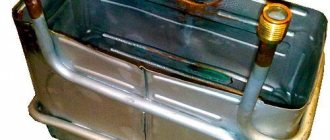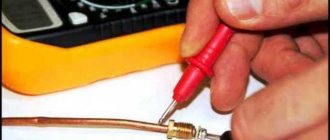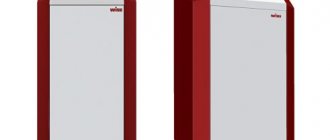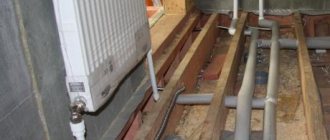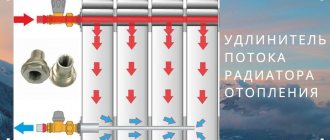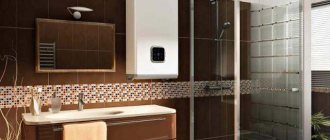Living on the outskirts of the city or in remote sparsely populated areas is a guarantee of silence, complete peace, and a favorable environment. But construction in such areas is often accompanied by many difficulties due to problems with infrastructure and various communications. The most pressing of them is the lack of electricity; it is important to solve it first. As you know, long-term installation of power lines from a centralized network is too expensive. It will be much cheaper to organize uninterrupted autonomous power supply at home. This is not so difficult to do if you carefully read the possible options and choose the most profitable one for yourself.
Installing an autonomous power supply is the only alternative when connecting to a centralized network is time-consuming, unprofitable, and problematic Source rina.pro
Requirements for home independent complexes
Before purchasing equipment to supply your home with electricity, you should calculate its required volume, which will cover the needs of all household appliances and other household electrical devices. To do this, the total power of all available electrical consumers is calculated. The most common of them are:
- refrigeration and freezer compartments;
- heating system;
- air conditioner;
- Appliances;
- pump (for delivering water from a well to the building);
- power tool.
The basic power of any unit can be found out from the instructions supplied with it by the manufacturer. This indicator is individual for different devices. But all devices certainly require a stable supply of electricity; voltage drops are unacceptable for them.
The data obtained is summarized, as a result of which they find out approximately how many kilowatt-hours an autonomous electrical system should produce daily. It is recommended to increase this number by 20-25% in order to have a small margin to increase energy consumption.
The total energy consumption in the house depends on the electrical appliances used, their models, as well as the constant number of residents Source dagzhkh.ru
Does objective reality not exist?
To create two alternate realities in the laboratory, the researchers used six entangled photons. One reality represented Wigner's reality, the other represented the reality of his friend. Wigner's friend measured the polarization of the photon and stored the result, after which Wigner himself performed an interference measurement to determine whether the measurement and the photon were in superposition.
The results obtained by the team of scientists were mixed. It turned out that both realities can coexist, even if they lead to irreconcilable results - just as Eugene Wigner predicted. But can they be reconciled?
The discovery of Scottish scientists is noteworthy for its complexity, since for the first time a thought experiment of this kind could be tested in laboratory conditions.
The idea that observers can ultimately agree on their measurements of some fundamental reality is based on several assumptions.
First, universal facts do exist and observers can agree on them.
Second, the choice one observer makes does not affect the choices other observers make—an assumption physicists call locality. So if there is an objective reality that everyone can agree on, then all of these assumptions are valid.
But the results of the work of scientists from Heriot-Watt University, published in the journal Science Advances, indicate that objective reality does not exist. In other words, the experiment assumes that one or more of the assumptions—the idea that there is a reality that we can agree upon, the idea that we have free will, or the idea of locality—must be wrong.
“The scientific method relies on universally agreed upon facts established through repeated measurements, regardless of who made the observations,” the researchers write in their paper.
I don't know about you, but my head is spinning because these results provide real evidence that when it comes to the field of quantum physics, there can be no such thing as objective reality.
Pros and cons of implementing autonomous power supply
The undeniable advantages of installing an individual electrical network are:
- independence from main power supply;
- minimum cost of one kilowatt of electric current;
- stability of electrical supply;
The presence of an autonomous power source in the house allows you to uninterruptedly receive electricity even when others are temporarily deprived of this opportunity due to repairs on power lines.
Flaws:
- high price of equipment;
- system maintenance costs are paid by the users themselves;
- space is required to accommodate an independent complex.
The positive and negative aspects of autonomous power supply described above apply to all types of existing systems. Moreover, each of them additionally has its own individual advantages and disadvantages. The latter to some extent affects the generated electrical power per unit of time and the cost of its production.
Using an autonomous energy supply, the home owner becomes completely independent in terms of obtaining electricity for consumption Source elektrikexpert.ru
Heat pumps
It would be more correct to call them an alternative heat source. Designed for organizing heating and hot water supply at home. They consume electricity, so they must be used in combination with other types of alternative energy.
The principle of operation is based on the ability of substances such as freon to boil at low temperatures. When it turns into a gas, thermal energy is released. The installation consists of external and internal circuits, as well as a pump circuit. The external one is buried underground or sinks to the bottom of the reservoir.
The freon circulating through it heats up under the influence of the environment, in the pump circuit under high pressure it turns into a gaseous state, as a result of which the temperature rises to 70 C°. The internal one carries the coolant heated in the pump throughout the house.
Heat pumps are very efficient and can provide hot water and heating all year round. Electricity costs are minimal - with the consumption of 1 kW of electricity, an average of 4 kW of heat energy is released.
Types of alternative energy sources
Modern technologies make it possible to obtain electricity from the following autonomous power systems:
- generators (diesel, gas, gasoline);
- solar power plants;
- wind generators.
The above equipment differs in price and profitability. In addition, for the installation of each of the listed installations, it is important to comply with certain conditions, which is sometimes impossible. It all depends on the location of the site, the local climate, and other factors.
The efficiency of using certain alternative energy sources directly depends on the region in which installation is required Source proekt-sam.ru
Electric generators
Modern generator sets are considered the most reliable and have the lowest price (compared to other independent systems). But the cost of one kilowatt of energy is extremely high. Such devices contain an internal combustion engine. It is connected to a coil, which, when untwisted, generates electrical energy.
When setting up a backup autonomous power supply, generators are connected to the electrical network in parallel. They additionally have an automatic connection system built into them, which starts the device when contact with the centralized power grid is lost. Electric generators can be adjusted to the required parameters. For example, it is possible to turn on an autonomous system only a few minutes after the power goes out. As a result, there is no need to manually start the unit, as well as stop it when the central power supply is restored.
The main advantages of modern generator sets:
- mobility;
- relatively small dimensions, which are influenced solely by the power of the unit;
- there is no need to install auxiliary devices that provide electricity generation;
- work regardless of weather, season, location.
Flaws:
- noisy operation, depending on the availability of high-quality fuel;
- difficult to start in the cold season (most of all this applies to diesel units);
- constant monitoring is required;
- the need for manual refueling of the tank;
- high cost of fuel materials.
Attention! Electric generators running on gasoline or diesel are not environmentally friendly. During their operation, harmful substances are released into the atmosphere. The latter should be taken into account when choosing the most suitable autonomous power supply system for yourself.
The operation of any electric generator requires periodic manual refueling of the tank Source iws.ua
How to make a wind generator
The ancestor of such devices are windmills, which were used hundreds of years ago. They allow you to receive electricity in any quantity all year round (depending on the power of the generator and weather conditions).
Principle of operation
Standard operating diagram of a wind generator.
A wind generator converts mechanical energy (produced by rotating the generator) into electrical energy. The work of, for example, a hydroelectric power station is based on this principle (only current is used instead of wind). Any wind generator consists of:
- Blades, rotating elements that set the rotor in motion.
- A generator that produces alternating current.
- Rechargeable batteries that serve as a means of storing and optimizing generated electricity.
- A controller designed to convert alternating current into direct current.
- An inverter that converts direct current into alternating current, thanks to which household appliances operate.
- A mast that allows you to raise the blades to the required height.
The maximum power of the system depends largely on the total area of the blades. The use of wind generators is profitable only for regions with an average annual wind speed of 6 m/sec. Only a few constituent entities of the Russian Federation have such indicators.
Average annual wind speed in different regions of the Russian Federation
Classification of wind generators
There are several classifications of these devices:
- By axis location: horizontal and vertical. The first ones allow you to make an automated turn in order to search for wind. Vertical ones are placed on the ground, have lower efficiency, but are easier to maintain.
- By the number of blades: one-, two-, three- and multi-bladed. The latter variety is intended for regions with low average annual wind speeds. Requires the use of a special gearbox, which increases the cost of the system. Therefore, multi-bladed wind generators are used quite rarely.
- According to the material from which the blades are made: sailing and hard. The former are easier to manufacture, but require regular replacement due to low strength. Hard blades are more expensive, more difficult to manufacture, but more durable.
- By screw pitch: adjustable and fixed. The first type allows you to increase the range of operating speeds, has more weight and is extremely difficult to manufacture. Fixed generators are simpler and more practical, which is why they are more popular.
Next, we'll look at how to make a low-speed wind generator from a used car generator.
Creating a Wind Wheel
Option for making blades from plastic.
The blades are the most important part of the wind turbine, as they determine the performance of the remaining elements. You can make blades from available materials: fabric, wood, plastic, polycarbonate, metal, etc.
We will look at the manufacturing technology of ordinary PVC sewer pipes. This material is favored by its resistance to moisture, low cost and ease of processing. To make the blades we do the following:
- Determine the required blade length. The best option is 5 times the diameter of the existing pipe.
- Use a hacksaw or jigsaw to cut the pipe lengthwise into 4 parts. One of them will be used as a template in the future.
- We process the edges with sandpaper, removing any burrs that appeared during cutting.
- We fix the treated blades and the generator on an aluminum disk.
It is advisable to use a PVC pipe with a thickness of 4 cm or more - in this case the blades will withstand strong gusts of wind. Don't make the blades too long - they will be less durable. If you need to provide electricity for a large house, it is better to increase the number of elements rather than their size.
Making a mast
Professional wind generator.
As with the blades, the mast can be made from available materials. We recommend using a steel pipe with a diameter of at least 15 cm - this material is quite durable and easy to process. The minimum mast length is 7 m.
If there are a lot of buildings or trees on the site, it is recommended to raise the wheel by 1-1.5 meters. Otherwise, uniform air flow will not be ensured. The fixing pegs and the mast must be filled with concrete - this will ensure their reliable fixation. Be sure to add reinforcement (or other unnecessary metal elements) to the solution.
Manipulations with a car generator
We do the following:
- We drill holes in the generator that allow us to fix the magnets in the rotor poles.
- We install magnets, alternating poles (plus - minus - plus, etc.). The resulting voids are filled with epoxy resin or similar material. We wrap the rotor in paper.
- We rewind the coil according to a three-phase circuit, without changing the direction of the turns.
A generator from any car will do.
Upon completion of work, we test the generator. Optimal indicator: voltage 25-30V at 300 rpm. If the power is less, add turns on the coil.
Step No. 4: completing the assembly of the structure
The rotating axis of the generator is made of a metal pipe with two bearings, and the tail part is made of galvanized steel (minimum thickness - 1.2 mm). A frame is also created to allow the generator to be attached to the mast. It is better to use a profile pipe.
Important: the distance between the mast and the blade must be at least 25 cm.
To ensure the functionality of the system, a controller, inverter and battery are additionally purchased and installed. The battery capacity is calculated based on the power of the generator, which depends on three factors: wheel dimensions, number of blades and average annual wind speed.
Video description
Which generator to choose: diesel or gasoline?
Solar panels
The main advantage of such independent power plants is the affordable cost of one kilowatt of electricity. They only require free energy from the sun to function properly. The operating principle of such installations is to convert light photons into electrical charge.
In order for solar panels to produce the required power to power home appliances, their area must be large. 1 m2 of surface of such an installation produces approximately 100 W, while the voltage is about 25 V. This is only enough to slowly charge the battery and power the lamps.
Solar batteries are devices that collect light energy from the sun's rays and convert it into electric current Source 220-on.ru
To obtain the electric current of the required parameters, it is necessary to install auxiliary equipment: inverter, batteries, controller. The first convert direct voltage into alternating voltage; it must correspond to the same indicators of 220 V electricity from a centralized network. To reap the full benefits of a power plant, excess energy must be stored for future useful use.
Solar panels allow you to generate electricity only during the daytime in bright natural light. At night such devices are absolutely useless. To solve this problem, a controller is used: it recharges the batteries. The excess electricity accumulated on it is used up during the dark period of the day; in the morning the charge is replenished again from the panels that have resumed their functionality.
The advantages of the above-described type of autonomous power supply to the house include:
- automatic operating mode;
- no additional costs;
- environmental friendliness;
- no fuel reserve required.
Flaws:
- the efficiency of the installation depends on the activity of the sun, the area where the system is located, and the time of year;
- considerable cost of equipment;
- frequency of operation, depending on the presence of abundant sunlight;
- the panels take up a lot of space and need to be installed in an open area.
Important! The surfaces of functioning solar panels must be periodically cleaned to remove dust accumulation. Otherwise, the efficiency of their work will decrease.
Solar panels installed on the roof of a house do not take up useful space and are highly efficient Source termico-solar.com
Solar panels
The operating principle is based on the ability of electronic devices called photocells to convert the energy of photons from sunlight into electrical energy. This example of alternative energy is the most common.
Batteries produced for private use use silicon photocells. They come in two types:
- Polycrystalline. Very fragile and therefore require careful handling. They have low efficiency - no more than 15%. Average service life is 20 years. The advantage is low price.
- Monocrystalline. More reliable. The service life can reach 50 years. Efficiency 25%. The disadvantage is the high cost.
Advantages of solar panels:
- an inexhaustible source of energy for several decades;
- ease of installation and maintenance, operation does not require daily human intervention;
- durability;
- no harmful effects on the environment and humans.
Their disadvantages are the high cost of equipment, which takes a long time to pay for itself, and dependence on the intensity of sunlight. If the sky becomes cloudy, the power of the photocells decreases.
Video description
Solar panels.
Myths and reality. Many of the disadvantages of such power plants are easily resolved. Problems with the placement of this equipment completely disappear if installation is organized on the roof. It does not take up useful space, and nearby non-residential buildings and garden trees do not create shading. Considering the significant cost of the system, it is important to note: modern solar panels have a huge resource, so they manage to pay for themselves before their useful life ends.
In addition, you need to take into account: such a source of autonomous power supply at home implies fairly frequent charging and discharging of the battery. For this reason, its resource is rapidly decreasing. To have the necessary supply of electricity at night, the battery will have to be changed frequently.
Solar panels installed on the roof of a house do not take up useful space and are highly efficient Source termico-solar.com
What to choose
Let's figure out which alternative energy option is better. Solar panels are the most preferred option due to their simplicity and environmental friendliness. However, they do not work at night.
Wind generators are well suited for areas where strong winds constantly blow. They function both day and night, but if the air flow weakens, the efficiency becomes zero. The best option is a combination of these two devices. Then you can be almost 100% sure that you will never be left without electricity.
Generator for home - purpose of the device, power selection and tips for repairing the main types of generators- Wind power plants for the home: selection of modern models and calculation of their efficiency + instructions on how to do it yourself
Gasoline generator - selection, connection and installation of modern devices. Rating of the best generators for the home in 2022!
Opt for a biogas plant if you keep cows, pigs or chickens on your farm, or if there is a farm nearby where you can take waste for processing.
And if you need hot water supply and heating, supplement your home system with heat pumps. They do not require maintenance; there is no need to buy and store fuel somewhere, as is the case, for example, with a solid fuel boiler.
Autonomous power supply at home: ready-made solutions
Organizations that sell independent power supplies offer ready-made device packages that can work immediately after installation. For the most part, these are all kinds of sets of solar power plants, wind generators, and other devices that have completely different technical parameters.
Solar powered
One of the ready-made options for an autonomous home power supply system is highly efficient equipment that uses solar energy and converts it into electricity using solar panels. This process is shown schematically in the figure below.
Solar batteries generate direct electric current, which is subsequently converted into alternating current (used in everyday life) using an inverter Source gws-energy.ru
In the modern market, the White Nights 1500 W-100x2P power plants, produced by the Russian company, are quite in demand. The kit contains:
- polycrystalline panels – 2 pieces;
- inverter;
- charge controller;
- a set of connectors designed for connecting panels;
- cable;
- fastener
Technical specifications:
- operating voltage – 12 V;
- rated power of each battery is 100 W;
- recommended air temperature – 0-40°C;
- output voltage – 220 V, frequency – 50 Hz;
- rated power – 1.5 kW.
Main advantages:
- Independence from failures in the centralized power supply network;
- energy savings;
- independent choice of communications wiring plan;
- savings on approval of design documentation;
- the ability to carry out repairs and technical work at any convenient time;
- gradual reduction in the cost of 1 kWh due to the development of conversion technologies, while 1 kW/h, due to growing demand and lack of fuel resources, is steadily becoming more expensive.
If conditions permit, in the future you can make a profit by selling excess electricity at a feed-in tariff.
Options for a summer residence
If it is necessary to create an independent power supply for a dacha, the option of using a solar power plant is also the most acceptable. In this case, if the equipment is used seasonally, it is possible to mothball the devices or take them out of operation for the period when there is no need for operation.
The option of building a wind generator is also quite affordable and justified. Because having incurred some one-time financial expenses, in the future you can, depending on your needs, receive your own electricity.
The option of using the “wind generator + solar power plant” scheme is also relevant in this case, and allows you to create a completely autonomous and reliable power supply scheme.
Bio waste generator
Biogas is an environmentally friendly type of fuel.
It is used similarly to natural gas. The production technology is based on the activity of anaerobic bacteria. The waste is placed in a container; during the decomposition of biological materials, gases are released: methane and hydrogen sulfide with an admixture of carbon dioxide. This technology is actively used in China and on American livestock farms. To continuously obtain biogas at home, you need to have a farm or access to a free source of manure.
Bio waste generator
To construct such an installation, you will need a sealed container with a built-in auger for mixing, a gas outlet pipe, a neck for loading waste, and a fitting for unloading waste waste. The structure must be perfectly sealed. If the gas is not taken out constantly, then you will need to install a safety valve to relieve excess pressure so that the “roof” does not blow off the tank. The procedure is as follows.
- We choose a place to arrange the container. Select the size based on the amount of waste available. For efficient operation, it is advisable to fill it two-thirds full. The tank can be metal or reinforced concrete. A large amount of biogas cannot be obtained from a small container. A ton of waste will produce 100 cubic meters of gas.
- To speed up the process of bacteria, you will need to heat the contents. It can be done in several ways: place a coil connected to the heating system under the container or install heating elements.
- Anaerobic microorganisms are found in the raw materials themselves; at a certain temperature they become active. An automatic device in water heating boilers will turn on the heating when a new batch arrives and turn it off when the waste warms up to the set temperature. The resulting gas can be converted into electricity through a gas-fired electric generator.
Advice. The waste is used as compost fertilizer for garden beds.
I'm starting to collect
Before purchasing and assembling, it is necessary to calculate the entire system so as not to make a mistake with the location of all systems and cable routing. From the solar panels to the inverter I have about 25-30 meters and I laid two flexible wires with a cross-section of 6 sq. mm in advance, since they will transmit voltage up to 100V and a current of 25-30A. This cross-sectional margin was chosen to minimize losses on the wire and maximize energy delivery to the devices. I mounted the solar panels themselves on homemade guides made of aluminum corners and attached them with homemade fasteners. To prevent the panel from sliding down, a pair of 30mm bolts point upward on the aluminum corner opposite each panel, and they act as a kind of “hook” for the panels. After installation they are not visible, but they continue to bear the load.
The solar panels were assembled into three blocks of 3 panels each. In the blocks, the panels are connected in series - this way the voltage was raised to 115V without load and the current was reduced, which means you can choose wires of a smaller cross-section. The blocks are connected in parallel to each other using special connectors that ensure good contact and tightness of the connection - called MC4. I also used them to connect wires to the solar controller, as they provide reliable contact and quick closing/opening of the circuit for maintenance.
Next we move on to installation in the house. The batteries are pre-charged with a smart car charger to equalize the voltage and are connected in series to provide 48V. Next, they are connected to the inverter with a cable with a cross-section of 25 mm square. By the way, when you first connect the battery to the inverter, there will be a noticeable spark at the contacts. If you have not mixed up the polarity, then everything is fine - the inverter has fairly capacious capacitors installed and they begin to charge the moment they are connected to the batteries. The maximum power of the inverter is 5000 W, which means the current that can pass through the wire from the battery will be 100-110A. The selected cable is sufficient for safe operation. After connecting the battery, you can connect the external network and the load at home. Wires are attached to the terminal blocks: phase, neutral, ground. Everything here is simple and clear, but if it is unsafe for you to repair the outlet, then it is better to entrust the connection of this system to experienced electricians. Well, the last element is connecting the solar panels: here, too, you need to be careful and not mix up the polarity. With a power of 2.5 kW and incorrect connection, the solar controller will burn out instantly. What can I say: with such power, you can weld directly from solar panels, without a welding inverter. This will not improve the health of solar panels, but the power of the sun is really great. Since I additionally use MC4 connectors, it is simply impossible to reverse the polarity during the initial correct installation.
Everything is connected, one click of the switch and the inverter goes into setup mode: here you need to set the battery type, operating mode, charging currents, etc. There are quite clear instructions for this, and if you can cope with setting up the router, then setting up the inverter will not be very difficult either. You just need to know the battery parameters and configure them correctly so that they last as long as possible. After that, hmm... After that comes the fun part.

